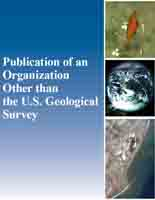Reconstructing the velocity and deformation of a rapid landslide using multiview video
Links
- More information: Publisher Index Page (via DOI)
- Download citation as: RIS | Dublin Core
Abstract
Noncontact measurements of spatially varied ground surface deformation during landslide motion can provide important constraints on landslide mechanics. Here, we present and test a new method for extracting measurements of rapid landslide surface displacement and velocity (accelerations of approximately 1 m/s2) using sequences of stereo images obtained from a pair of inexpensive, stationary 4K video cameras with nominal frame rates of 29.97 Hz. The method combines elements of Structure from Motion with those of optical flow to extract data on 3‐D evolution of the ground surface during slope failure. We apply the method to an experiment at the U.S. Geological Survey debris‐flow flume in which a high‐speed, liquefying landslide was triggered by gradually adding water to a 6‐m3 prism of loosely packed sediment on a 31° slope. Strip‐scanning lidar measurements made during the experiment corroborate our video‐based measurements, but the latter encompassed the entire landslide surface and were much lower in cost. Our video‐based measurements enabled computation of depth‐integrated landslide dilation/contraction rates. The range of computed rates was within the ranges inferred from independent measurements of evolving pore water pressures and reasonable estimates of the hydraulic permeability of the sediment. Dilation and contraction rates play a crucial role in landslide mechanics. The dilation and contraction we observe contradict the incompressible flow assumption used in many studies that have employed noncontact methods to infer landslide properties.
Study Area
| Publication type | Article |
|---|---|
| Publication Subtype | Journal Article |
| Title | Reconstructing the velocity and deformation of a rapid landslide using multiview video |
| Series title | Journal of Geophysical Research - Earth Surface |
| DOI | 10.1029/2019JF005348 |
| Volume | 125 |
| Publication Date | August 03, 2020 |
| Year Published | 2020 |
| Language | English |
| Publisher | American Geophysical Union |
| Contributing office(s) | Geologic Hazards Science Center |
| Description | e2019JF005348, 18 p. |
| Country | United States |
| State | Oregon |
| Other Geospatial | Blue River |


